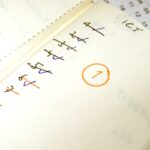ASVAB Scores: 10 Things You Need to Know
Attaining high ASVAB scores is challenging work. You greatly improve your odds, however, if you’re able to understand the layout of the test, subject matter, and how those scores are specifically calculated. For those of you who don’t know, the ASVAB stands for Armed Services Vocational Aptitude Battery. It’s the test you’ll have to take if you want to qualify for one of the branches of the US Armed Forces.
In the following article, we’ll be discussing all of the above factors, as well as some of the facts that you may not be aware of regarding the test. These are factors that will be important to your overall ASVAB experience, so attention! Let’s begin.
1. Each Branch of the Armed Forces Has Different Scoring Requirements
The first fact to be mindful of when targeting specific ASVAB scores is also probably the most annoying, and it’s this. A “good” minimum score for one branch of the Armed Forces won’t necessarily get you into your desired branch. That’s because each branch has their own acceptance requirements. Here’s a brief rundown of how each one works:
- Air Force: for high school graduates, the Armed Forces Qualification Test, or AFQT Score (more on what that means in a bit), should be 36.
- Army: 31, with a high school diploma.
- Marines: 32
- Navy: 35
- Space Force: data not yet available
Furthermore, the requirements are different for GED graduates. We’ll discuss that later in the article as well.
2. High ASVAB Scores Are Not Determiners of Success
It’s important to note that high ASVAB scores simply indicate where your efforts in the military will be best spent. They in no way indicate that you’ll be successful. For that, you’ll need to enlist and work through basic training before pursuing specific courses of education. Furthermore, some career paths may require further education outside of the Armed Forces.
3. Computer and Paper Tests Follow Different Formats
ASVAB continues to hang in there with its paper version, but you can take it in a computer-based format now. If you choose to go this route, be mindful that the tests differ slightly in number of questions and time limits.
For paper-based testing, you can expect 225 multiple choice questions in all with a grand total of two hours, 29 minutes among all nine sections. Computer-based testing cumulative is 145 questions with two hours, 34 minutes altogether with 10 sections.
4. There Are Multiple Sections on Each ASVAB Test
The sections are largely the same between the paper-based and computer-based tests. The only difference is that computer-based splits the Auto & Shop Information section of the paper-based into two separate sections.
5. Your ASVAB Scores Do Expire
One thing many test-takers like to do is take the ASVAB in high school with no immediate desire to enlist. The thought process goes something like this. Take it when it’s offered. Get some sense of where your strengths are. Maybe give an associate’s degree a shot before enlisting for the GI Bill.
That’s a good plan, but you do need to keep in mind that the ASVAB scores are only good for two years. If you get a good score and do plan to enlist, it’ll save you a lot of time, trouble, and studying to go ahead and enlist before the valid period expires.
6. ASVAB Scores Are Useful for Setting a Career Path
ASVAB scores go into far more detail about what type of career you’re most likely to be suited for. Look at the ACT or SAT. They generally test your math and reading skills, some science knowledge, and your writing abilities. ASVAB puts these metrics on steroids with 10 different categories that break down as follows:
- Arithmetic Reasoning
- Word Knowledge
- Math Knowledge
- General Science
- Paragraph Comprehension
- Electronics Information
- Shop Information
- Auto Information
- Mechanical Comprehension
- Assembling Objects
Each section walks the balance between the main subjects you learn in high school and the practical applications in careers that can also cross over (profitably) into private life. For that reason, you should consider taking the ASVAB even if you have no real desire to enlist.
7. Raw Scores vs. Standard Scores
ASVAB scores can seem confusing. That’s because they are. For example, you get a Standard Score on each section, but the Standard Score relies on something called your Raw Score. Your Raw Score is the number of questions you got right versus the overall number of questions on the test. Simple enough, right?
Where it starts to get confusing is in the Raw to Standard computation. The Standard is a statistical derivation given in “percentiles” from a testing group of 12,000. In the next section, we’ll explain further how this breaks down.
8. AFQT Scores vs. Composite Scores
The focus percentiles of Standard Scores are 30 to 70 so that scoring in the 30th percentile means 70 percent of the testing group performed better than you. A 50th percentile is considered “average.” As noted above, most branches of the Armed Forces require ASVAB scores higher than 30 for acceptance. This requirement is called the AFQT Score.
The Composite Score takes combinations of scores to try and determine the appropriate pathway for you within the Armed Forces. Tallied up, these are also referred to as Military Occupational Specialties, or MOS scores.
Example: Your Composite Score in the Air Force for Mechanical would take into consideration the sub Standard scores of Arithmetic Reasoning (AR), Verbal Expression (VE), Mechanical Comprehension (MC), and Auto and Shop Information (AS). For Administration, the combos would be in Verbal Expression (VE) and Mathematics Knowledge (MK). For General, it would be Verbal Expression (VE) and Arithmetic Reasoning (AR). And for Electronics, you would need to score well in Arithmetic Reasoning (AR), Mathematics Knowledge (MK), Electronics Information (EI), and General Science (GS).
9. There Are Limits on How Many Times You Can Take the Test
There can be many reasons for wanting to retake the test. You may not have liked your score the first time even if you did better than the minimum requirement, thus qualifying you for occupational pathways you don’t prefer. Or, maybe you didn’t make the minimum AFQT the first or second time through. Either way, you get more than one crack at it.
Perhaps the most pressure-inducing fact here, it is true that you only get a few cracks at the ASVAB test. After the first time you take it, you’ll have one month to take it again from the original testing date. It then goes to six months from the second test date for the third and final time.
10. GED Students Face a Higher Score Requirement
Last fact you need to know about ASVAB scores is this: if you’re planning to enter the Armed Forces through a high school equivalency certificate, you have a little tougher challenge ahead of you. Each branch of the military expects more from GED students with the Air Force requiring a 65, Marines a 50, and Navy a 50. The Army is the only branch that accepts a 31 (same as high school graduates).
Knowing What to Expect from ASVAB Scores Will Set You Up for Success
Now that you’re familiar with the test and the ASVAB scores in general, it’s time to think about whether this is the path for you. Again, you lose nothing by giving it a shot, and you may just shed some more light on the career path for you, whether you enlist or not. Best of luck as you make your decision, and for a free ASVAB practice test, check out this one at 4Tests!
[Featured Image by Wikimedia Commons]








